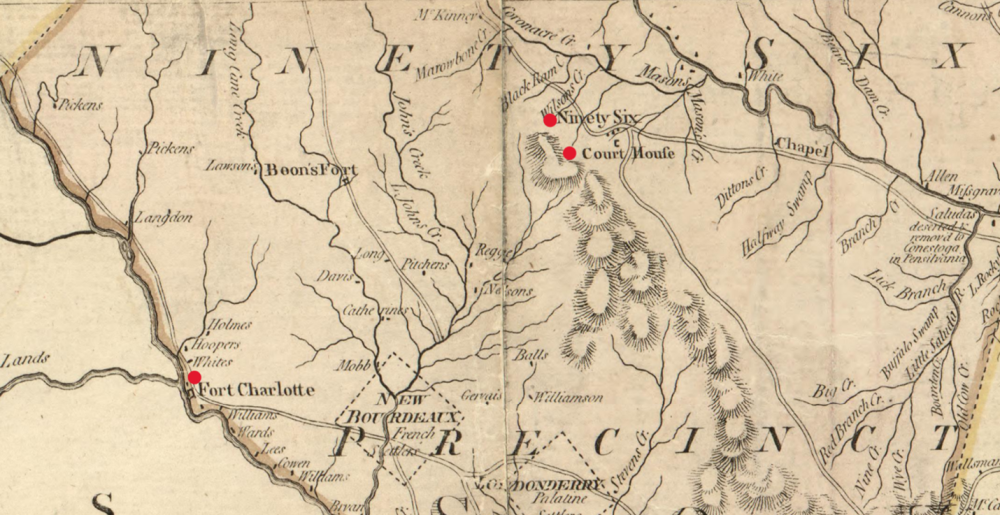
Excerpt from “An accurate map of North and South Carolina, with their Indian frontiers…” by Henry Mouzon in 1775. From the collections of the South Carolina Historical Society.
In 1775, Ninety Six was a recently established courthouse town in the South Carolina backcountry. The question of independence and the growing tensions between Great Britain and the colonies were deeply dividing the people living in the district. Many colonists professed a strong loyalty to Great Britain for the safety provided against Native American conflicts and the receipt of land grants. On the other side were colonists who felt the British government had neglected their promise to create a better government in the backcountry and were in favor of independence. This led to repeated civil conflict in the backcountry between Loyalists and Patriots.
In June of 1775 patriot forces led by Major James Mayson seized Fort Charlotte, a Loyalist post on the Savannah River approximately fifty miles from Ninety Six. Mayson and his forces were able to take Fort Charlotte and its large cache of weapons and gunpowder. The triumph was short lived when, upon return to Ninety Six, the patriot forces were met by Loyalists. The seized weapons and ammunition were then returned to the Loyalist fort and the incident ended without bloodshed. Soon after this incident, another opportunity for conflict emerged when Tory (Loyalist) forces gathered and threatened to advance. In response, William Henry Drayton, who was the leader of the Whig (Patriot) political party and a member of the Council of Safety, and Major Andrew Williamson countered the threat with a formidable show of force. This standoff ended in September when both sides agreed to a truce.
The repeated threat of conflict between Loyalists and Patriots revolved around the cache of weapons and ammunition at Fort Charlotte followed by a subsequent shipment of weapons and ammunition sent to Ninety Six by the colonial government. On November 18, 1775, a force of eighteen hundred Loyalists attacked the lesser Patriot forces under Major Williamson. The Patriot forces were able to gather more men and build a makeshift stockade to defend their position and to protect the weapons and ammunition. The fighting spanned three days and saw few casualties before the two sides agreed to a truce. The Patriot forces held their ground, leaving the Loyalists to withdraw without the cache of weapons and ammunition. This first battle of Ninety Six marked the second battle in South Carolina and the first bloodshed in the state during the fight for independence.